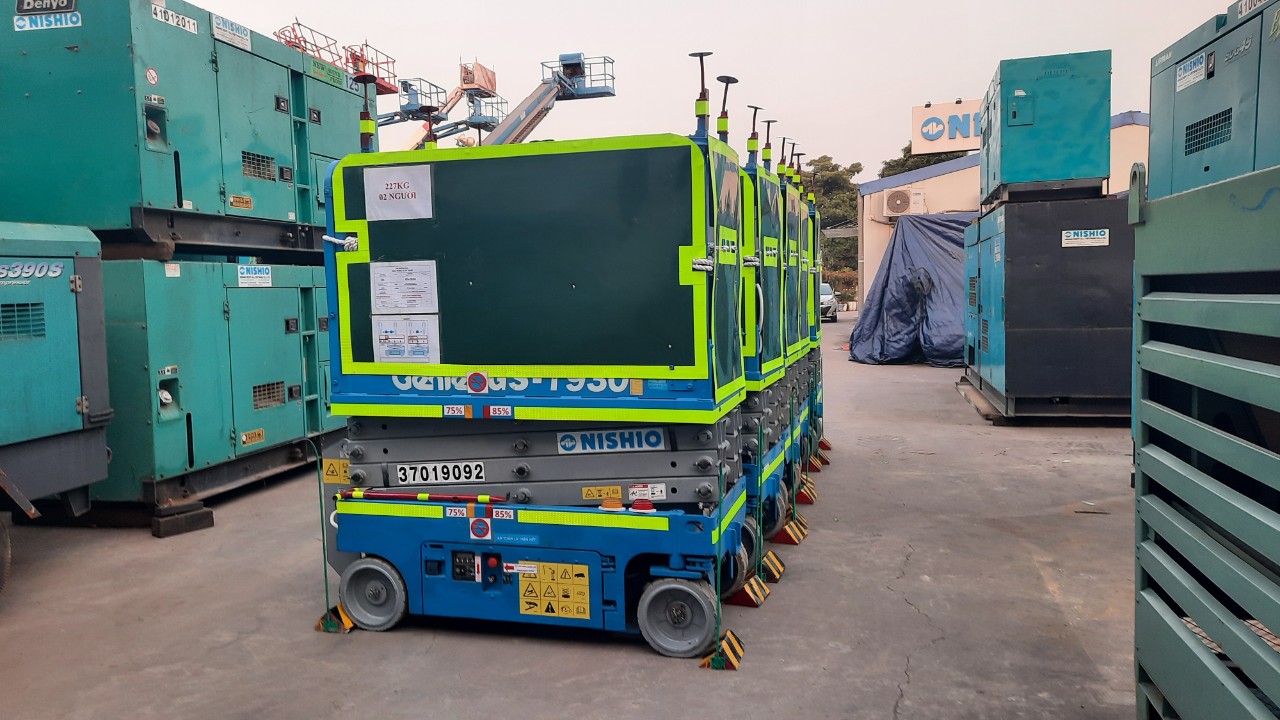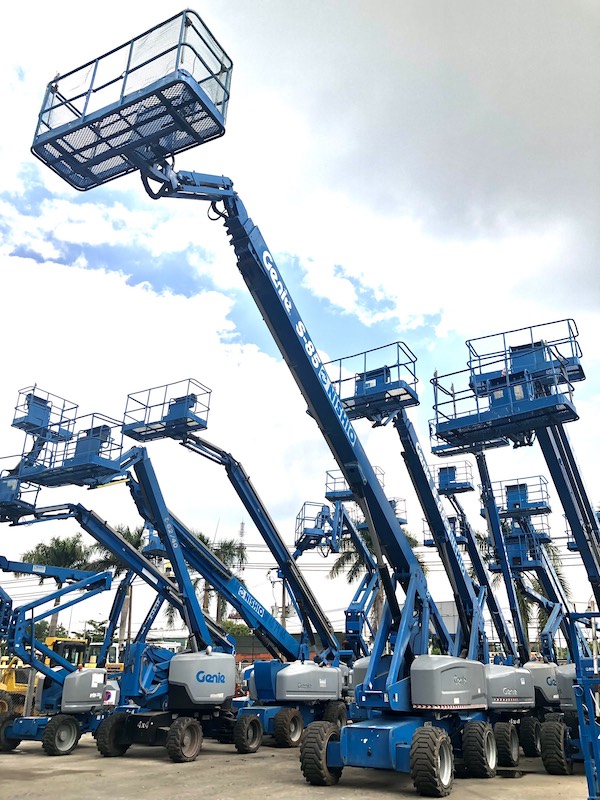- 2022/03/28 Product Information
- Things you need to know when using the Scissor Lift on a slope
- We all know that using a scissor lift on a slope is very dangerous. But, some scissor lifts can be used on an incline. In this case, it may be safe to use them on a slope — as long as you don’t exceed the scissor lift’s maximum working angle. The max working angle may be listed on a scissor lift’s ID plate. Or, it may be marked by a decal on the platform. You can always find it in the operator’s manual, too. And if your scissor lift is not rated for an angle, it should only be used on firm, level ground. A sloping sites Before using a scissor lift on a slope, inspect your worksite for any other hazards besides the slope. Other safety tips include: ✓ Read the operator’s manual and follow all guidelines for driving or working on slopes. ✓ Never raise or extend the platform unless the lift is on a firm, level surface. ✓ Don’t drive on a slope unless you know the angle. ✓ Limit the speed according to the surface traction of the slope. ✓ Never exceed the maximum slope rating for the lift. ✓ Plan for extra braking distance on slick or unstable surfaces. ✓ Never use a driver who has not been trained on how to use a scissor lift on a slope. Nishio’s Genie brand Scissor Lift The Outriggers and Wheel stops can improve safety with a scissor lift, especially when we park or work on inclines. The purpose is keep the level, increased stability and a reduced risk for a tip-over. You can add outrigger boards under the outrigger to keep the level and increase stability further. Another purpose of the outriggers is to allow the scissor lift to carry a heavier load safely. Wheel stops NISHIO prepares wheel stops when we keep machine at our warehouse Some scissor lift with Outriggers Finally, you are still worry about using scissor lift on sloping site, please do not hesitate to contact us! Related AWP news: Things you need to know when using a Boom Lift on a slope The NEW scissor lift for rent: GS1932m E-Drive (Slab Scissor Lifts) New Genie 14m GS4655 is now available in Vietnam!
- 2022/03/11 Product Information
- Things you need to know when using a Boom Lift on the slope
- Boom lifts can go much higher than scissor lifts — up to 39.6m (130 feet) or more. They offer greater flexibility than scissor lifts, since the bucket rests on a hydraulic arm and can move in all directions. Meanwhile, boom lifts have smaller platforms than scissor lifts to keep the safe because it goes up higher than scissor lift. They are also ideal for jobs where the worksite is small or hard to access. Like scissor lifts, boom lifts aren’t recommended to use on a hill or incline. The center of gravity is higher with this machine than with many others, which increases the risk for a tip-over. However, it is possible to work on an incline as long as you don’t exceed the maximum slope with a safe working load for the boom lift. Safely driving a boom lift on a slope starts with knowing the lift’s maximum slope rating is very important. A digital inclinometer can be used to measure the exact degree of a slope. If you don’t have one, place the board at least 3 feet long on a slope. Then, place a carpenter’s level on the board and raise the lower end of the board level until it is horizontal. Once you do that, complete these steps: Measure the distance to the ground. Divide the distance by the length of the board. Multiply the result by 100. This simple formula provides the percent of the slant. If the number exceeds the max slope rating, do not drive the lift on the slope. Instead, winch or hoist the lift across the sloped area. Keep in mind that max slope ratings can change due to ground conditions and weather. For example, mud or loose gravel can reduce traction and extend stopping distances. Driving speeds need to be reduced when crossing sloped or rough terrain as well. Proceed with caution why you drive a boom lift on a slope near drop-offs or cliffs. There are many things that you can do to safely use a boom lift on a slope, such as: ✓ Use a pre-operation checklist to inspect a lift before you use it. ✓ Make sure a lift’s tires are inflated to the proper pressure, as low or high pressure can impact a lift’s stability. ✓ Check the surrounding area for un-compacted fill, ditches, and holes and address these issues before you begin work. ✓ Only use a lift designed to climb slopes. ✓ Check the weather report before you start work; if inclement weather is on the horizon, you need to plan accordingly. ✓ Make sure operators and ground workers are trained and certified to use a boom lift. Construction Equipment A boom lift should never be used in winds that exceed 45km/hour (28 mph). When in doubt about whether to operate a boom lift in high wind conditions, use your best judgement, and always err on the side of caution. Furthermore, you should always check a worksite for overhead hazards, such as overhangs or high-voltage power lines. As a general rule of thumb, stay at least 50 feet away from electrical wires on steel towers and 30 feet away from wires on wooden or concrete poles. Last but not least, remember that using an Articulating Boom Lift is safer than using a Telescopic Boom Lift on the slope. A boom lift safety training course can make a world of difference. By receiving boom lift safety training, you can learn how to properly operate a boom lift on slopes, lower your risk of boom lift accidents, and more. NISHIO also offers training lessons for safe operation to your operators. If you have any questions, do not hesitate to contact us!




